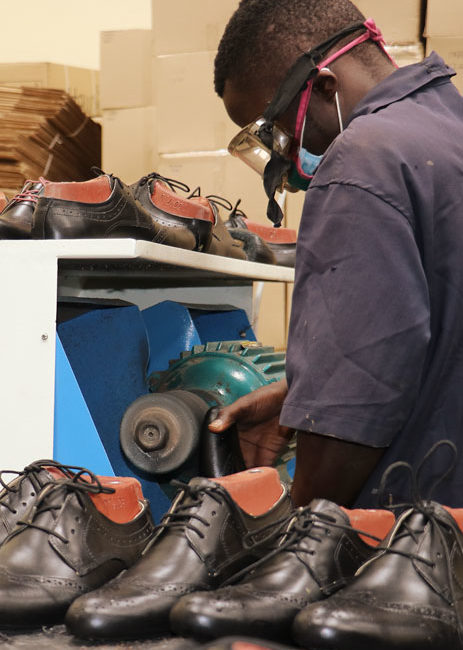Leather industry stakeholders from East Africa, Egypt and Ethiopia attending South-South Leather Industry Exchange (SSE) virtual forum called for a coordinated manner in the development of policies between Governments and the private sector. The event organized by the Center for Business Innovation & Training (CBiT) in collaboration with a consortium of national leather Associations was held under the theme ‘Advancing Africa’s leather industry through south-south collaboration’ and discussed effective policies in the region that have seen the leather industry in some countries generate more value across the value chain while highlighting nationalistic policies that have left other countries less competitive.
While delivering the keynote address on the role of policy in building competitive leather industries Executive Director in the Africa Leather and Leather Products Institute (ALLPI) Prof. Dr. Mwinyikione Mwinyihija said policies should ensure tangible growth and development are measurable, scoped and address the expectations of industry stakeholders. Professor Mwinyihija lamented that several policies were nationalistic thereby blocking regional integration and synergy among stakeholders.
“Nationalistic policies are very slow at creating skills, unlike regional policies that encourage competition & growth of skills. In countries where policies are geared at ensuring local companies get an unfair advantage over competitors many at times their capacity to create value and ensure the capability to support capacity is inadequate,” Prof Mwinyihija warned.
Referring to policies undertaken in the Egyptian and Ethiopian leather industry speakers at the forum pointed at the importance of having an industry-led policy development mechanism including incentives for stakeholders to create synergy through leather parks and cities. Addressing the forum Leather Council of Egypt President Mahmoud Mohamed Sarg told participants that his country, which has created the largest leather hub in Africa and the Middle East, had provided incentives for tanneries to move out of Cairo to the Robbiki leather city with free land and compensation for damages during movement. Ethiopian Leather Industry association also stressed the need for goodwill from the government to ensure new policies solve logistical problems, access to finance, base the local market, solve input problems and demand quality assurance through continued skilled development.
“In Ethiopia’s fourth policy phase for the industry our association and Leather Industry Development Institute (LIDI) have teamed on four sector focus areas to provide technical support, conducting research and development, providing consultancy services to leather and leather products producers and constant human resource development programs with the university and TVET linkage,” said Daniel Getachew, Secretary-General, Ethiopian Leather Industries Association.
“If all measures and policies are agreed upon by member states, the sector will contribute more with a positive socio–economic impact through the targeted market share in States. Time limits need to be put in place to ensure no delays in implementation of agreed policies in the East African Community,” concluded Mukashaka Germaine Chairperson, Leather Value Chain Industry Platform, Rwanda.
The Ministry of Industrialization, Trade and Enterprise Development (MoITED) through the acting Director, at the Directorate of Agro – Industries Simon Atebe stated that Kenya’s Ngozi leather park will be ready for occupation by December 2021 when the effluence plant will be complete & facilities for firms to occupy are ready citing one of the Kenyan government’s support on the industry.
Following the conclusion of the two-day event stakeholders have called for more collaboration between countries in the elimination of fake and illicit leather from the market, strengthening of national associations in policy formulation and implementation and knowledge transfer enable the region contributes more to the global leather industry.
Editors’ notes
ABOUT SSE
The South-South Leather Industry Exchange (SSE) virtual forum is a Center for Business Innovation & Training (CBiT) led initiative, in collaboration with a consortium of national leather Associations in EAC, Egypt and Ethiopia with the support of GIZ-EAC and GFA Consulting Group, and was held on 27th – 28th January 2021. The forum aimed to facilitate sharing information and best practices in advocacy and to promote the establishment of business linkages between leather entrepreneurs and prospering leather industries in the two regions including Kenya, Uganda, Tanzania, Rwanda, Burundi, Ethiopia and Egypt.
The SSE forum is among four key components the Leather Industry Network (LIN) project, to be launched in February, is undertaking intending to foster trade and shape the sector’s regional development agenda. This is to be achieved by utilizing digital networking as a strategic tool in harnessing the potential of private sector leather players. Further, the LIN project hopes to capacity build leather associations in East Africa and influence policies that can promote favorable leather industry framework conditions.
LEATHER INDUSTRY OVERVIEW
• Leather and Leather products are among the most widely traded agro-based commodities in the world, with a global estimated trade value of over US$ 100 billion annually
• Africa’s represents 26.32% of the world’s 3.5 billion livestock
• 1.3b pieces of hides and skins are produced globally with Africa taking14% of world production
• African countries account for only 4% of world leather production and 3.3% of value addition in leather
• EAC accounts for 3 percent of the world total bovine herd, 5 percent of the goatherd and 2 percent of the sheep herd
• In EAC approximately 90% of exports are in the form of wet-blue, raw hides and skins
• EAC has a deficit of 90 million pairs against a supply of just 20 million pairs both produced locally and imported
• EAC monthly demand for pairs of industrial shoes (security, safety, industry) is about 600,000 against the current production of only about 60,000 shoes per month
• EAC requires 2.5 million sqft of finished leather per month against current production of finished leather of less than 100,000 sqft per month
• If EAC would bridge the demand-supply gap of leather products the region would potentially create over 100,000 jobs

